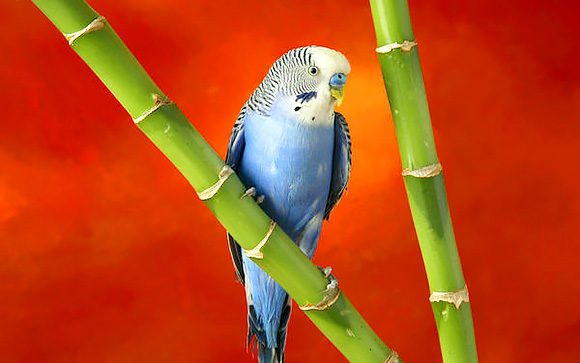The most communicative parrots are African Greys. These small grey birds perfectly mimic the human voice, and their tone can immediately indicate whether they are imitating a male or female. Amazons and cockatiels also speak well, though their speech differs from humans. Good conversationalists are cockatoos and macaws. On the same level are budgerigars, which, despite their small size, can also engage in conversations with their owners if trained properly.
How to teach a budgerigar to talk? Some capable individuals learn to say their name without training. But for better results, follow a method to teach your parrot to speak quickly and clearly:
- The lessons should be conducted by one family member — the most patient and persistent. The same phrase can sound different coming from different people.
- The bird must be ready for learning. A pair of parrots will never talk to each other — they have enough “bird” communication. If the bird feels lonely or bored, training will become a fun part of the day.
- Place the bird on your hand, on a play stand, or leave it on a perch in its cage.
- Once you have the bird’s attention, repeat the desired phrases 10-20 times. Use these phrases in everyday life. Choose a few phrases and say them emotionally.
- Praise the bird, especially if it tries. Reward with a treat and verbal praise. Once the bird gets distracted, end the lesson.
How to teach a parrot to speak in one day? Here’s a proven method: clearly and expressively say a word in the morning before feeding. The bird will likely remember it. Or, during feeding, say “Misha wants to eat,” and the chick will associate the phrase with mealtime. When hungry, Misha will shout that it wants to eat.
A common misconception is that female parrots can’t speak. While they are harder to train, they tend to pronounce words more clearly. Once the bird starts “mumbling,” you know you are on the right track!
What should you remember to teach your parrot to talk?
Yes, you can teach a budgerigar to talk! Just keep a few things in mind:
- Start training at 2-3 months old. Young birds learn better, though there have been cases where even 10-year-old parrots started talking.
- Practice daily, 2-3 times a day. Spend 10-15 minutes on morning lessons, practice again during the day, and review the material in the evening for 20 minutes. Consistency is key.
- Keep in mind that birds don’t understand the meaning of the words they say. To get them to respond as desired, you need to create a conditioned reflex. For example, when you return home, always say a clear and affectionate “Hello.” Eventually, the bird will associate the word with your return. Similarly, every time you turn on the light, say the word “Light.” The bird will later associate this with the process and start calling for the light.
- Never shout at or insult the bird, or it may learn to repeat the curse words.
- Birds find it easier to imitate voices with higher tones, so they usually remember words spoken by women and children more easily.
- Start with simple sounds: consonants like “t,” “r,” “k,” and “p,” vowels like “a” and “o,” and hissing sounds like “ch” and “sh.”
Lessons should be conducted by someone the bird trusts. Make sure the bird is calm and remove distractions like the TV, radio, or household noise. At first, get to know your student. To tame the bird to your hands, start by holding a feeder and extending it to the bird. It may peck at your hand — that’s normal. This ensures that the hand isn’t a threat. Once the bird isn’t afraid, feed it from your hand and show it that the hand is for playing and sitting, not just for food. Try petting it gently with your fingers. When the bird is comfortable with your hand, you can let it perch on your finger and let it explore the room.
How to teach a parrot to talk in 5 minutes? Teaching a parrot to talk quickly is not possible. It takes time and patience. Many people ask how to teach a parrot to speak in 5 minutes and, due to time constraints, play a tape recorder for the bird and leave. This is a big mistake. The bird will soon stop recognizing the voice from the recorder. Just like the owner’s voice, it will become background noise. Even if the parrot begins to talk, it will do so in silence.
Many online users give advice on how to teach a parrot to talk. Experienced zoologists suggest that a clever bird will start talking in 3-5 months, though it may begin making sounds as early as 3 weeks. Don’t lose patience — the parrot may be silent for six months and then start speaking full sentences.
Want to know how to teach your parrot to dance to music? Start your training with dancing. Once the bird learns to sit on your finger, play a rhythmic song. Parrots are excellent imitators, so begin dancing yourself, moving your finger and head rhythmically. If the bird shows no interest, try showing it videos of dancing parrots.
Many breeders, wanting to save money, try to sell sick and weak birds. When buying a bird, be sure it is in good condition and receives balanced nutrition.
